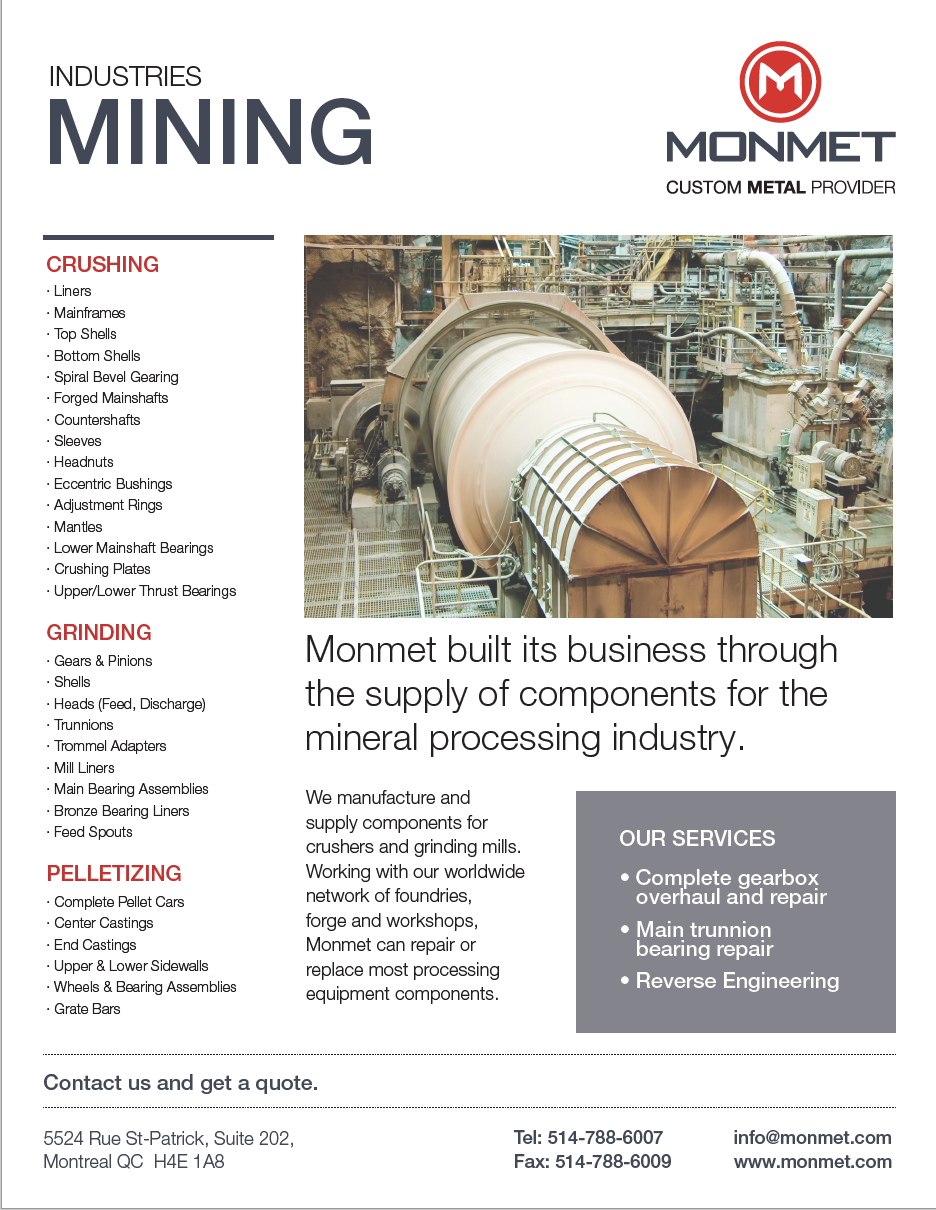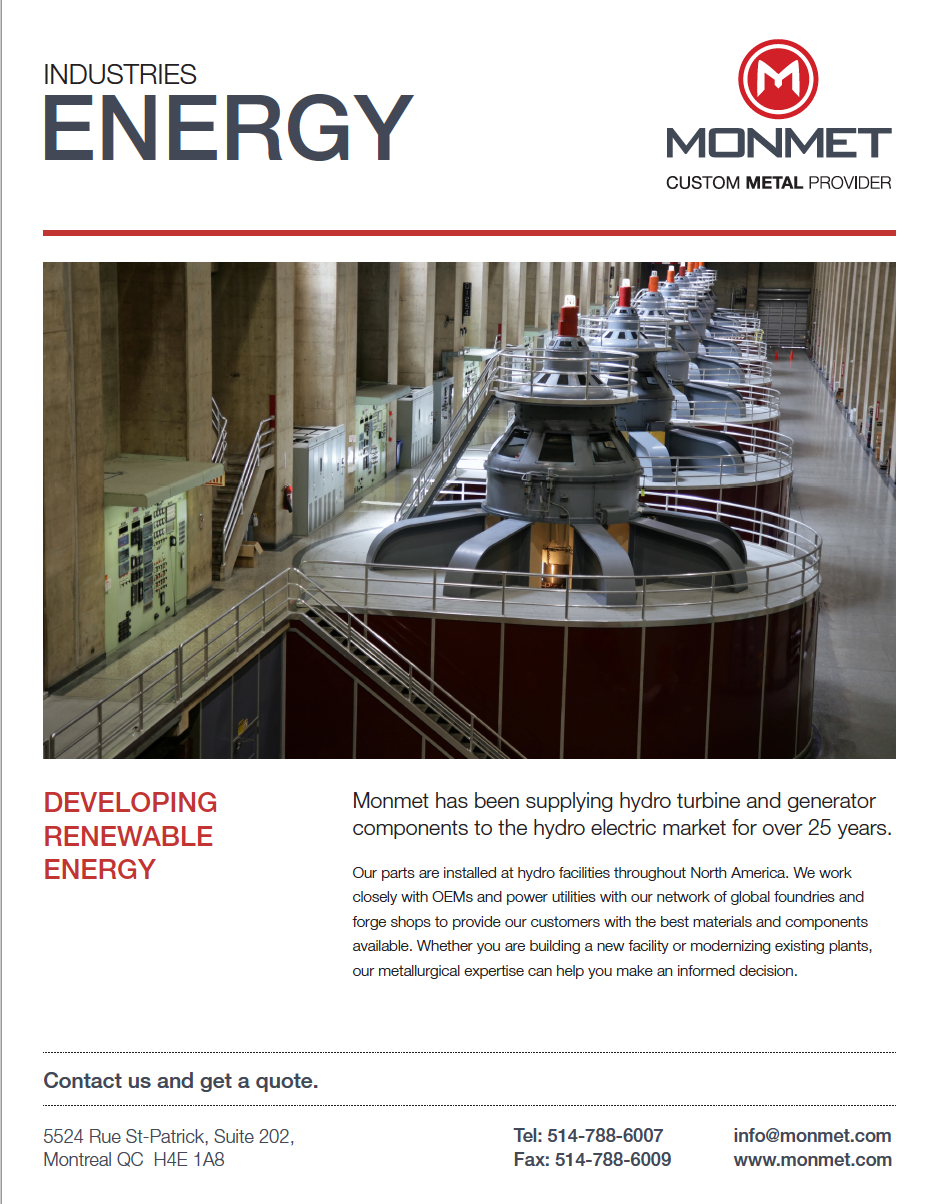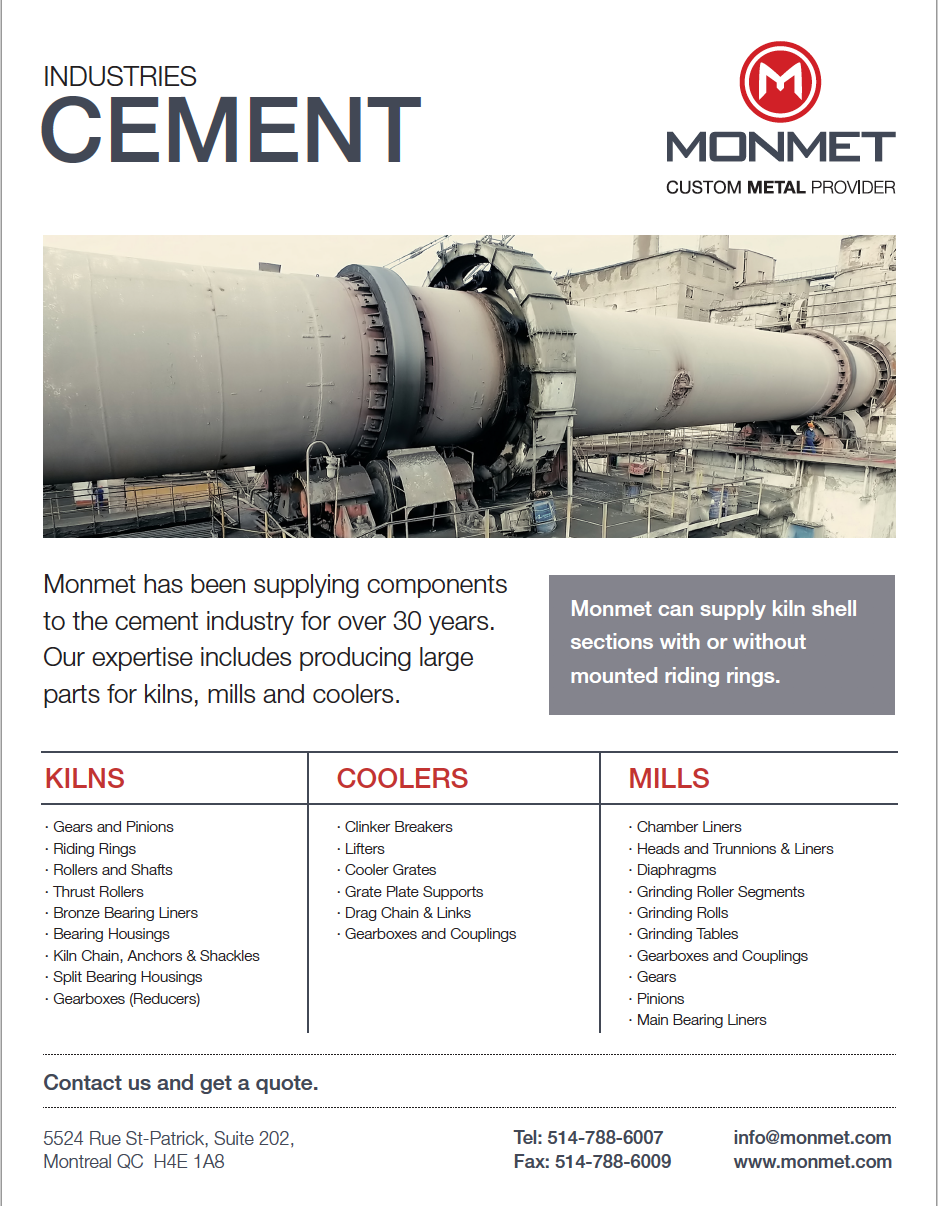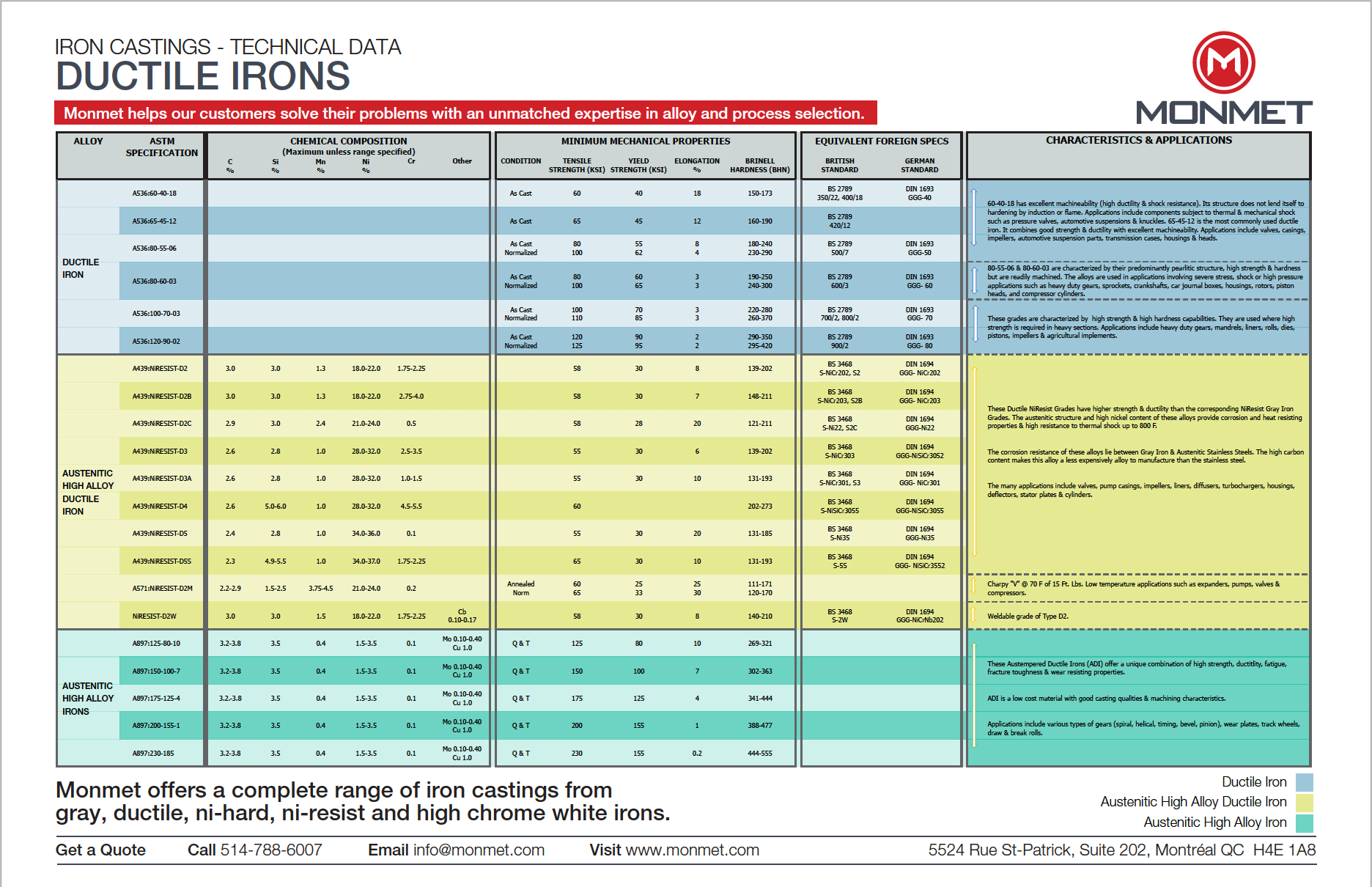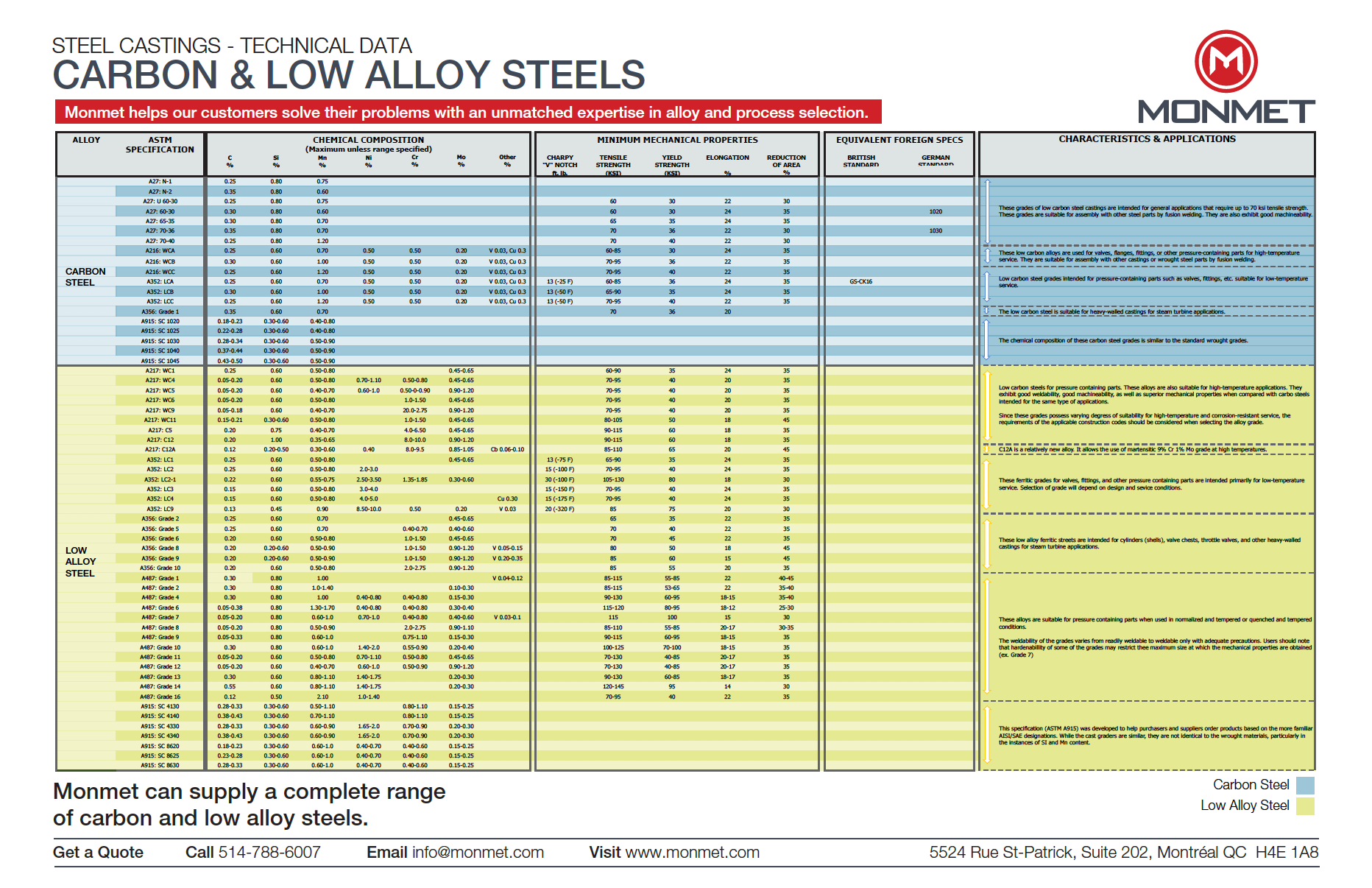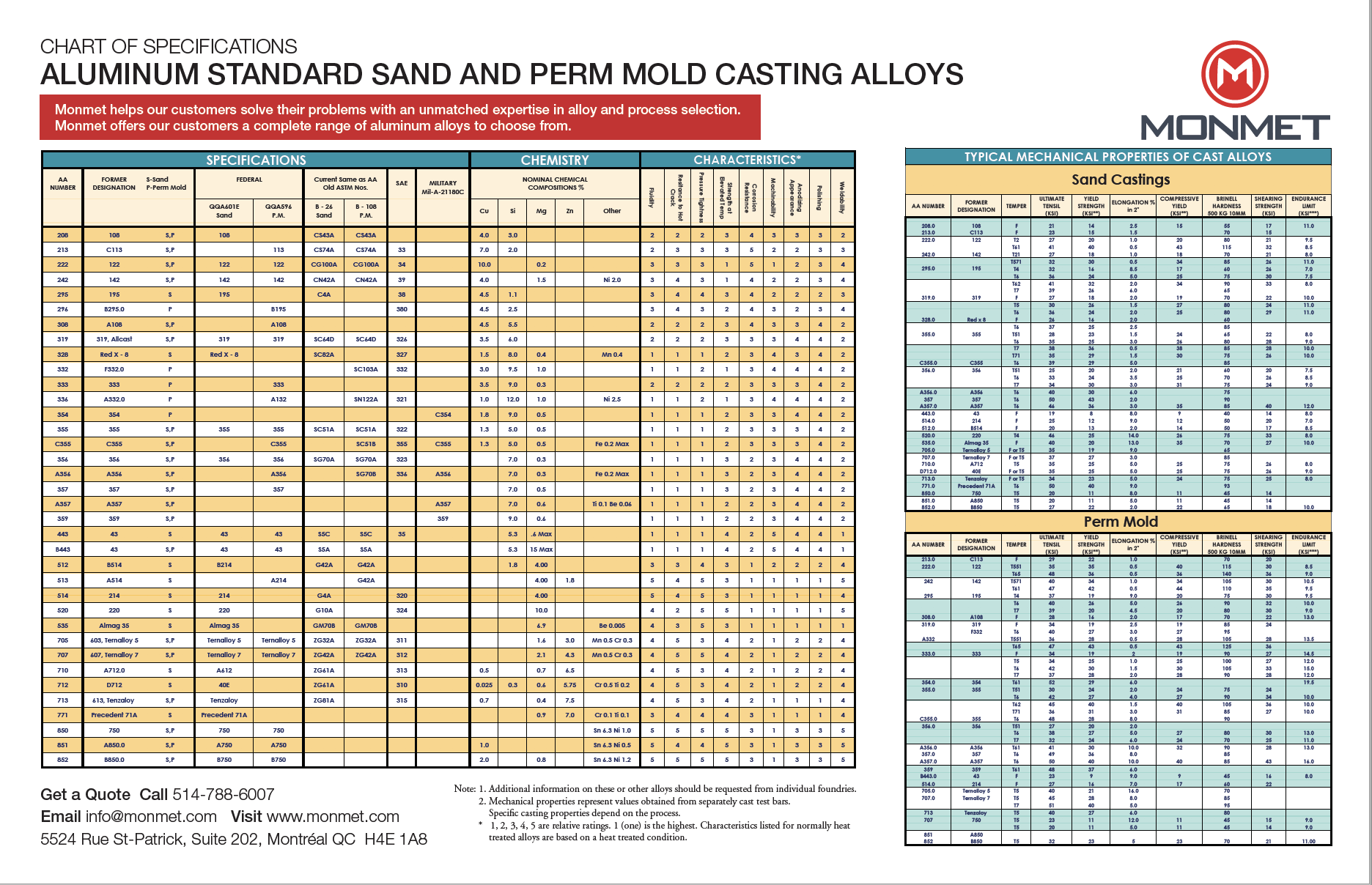Resources
Resources
resources

Centrifugal castings are made by pouring molten metal into a rotating mold on a vertical or horizontal axis. Molds can be made of cast iron or steel, copper, graphite, ceramic, or dry sand.
(Scroll down to learn more)
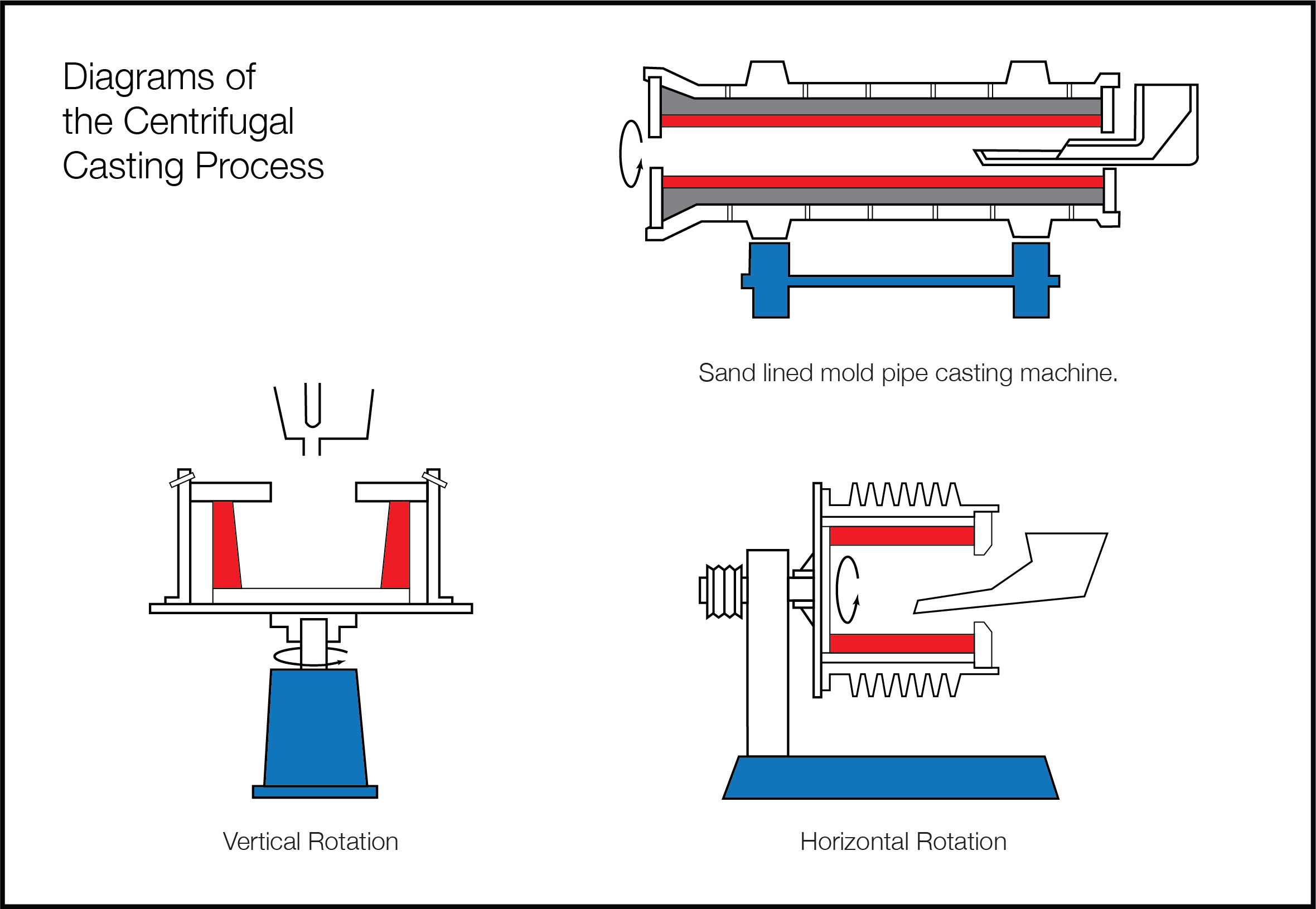
When pouring heated metal as the mold is rotating, the gravitational force pushes the metal from the center to the periphery filling the crevices and details of the mold. Centrifugal force aids in the homogeneity and accuracy of the casting. The speed of rotation and pouring varies with the size and shape of the piece being cast.
A true centrifugal casting takes on a traditional cylindrical shape, although additional modifications can be made on the outside of the casting by using flanges or small bosses. Casting sizes for centrifugal castings are quite vast, with outer diameters from 1 meter to 6 meters and lengths of up 4.5 meters.
All metals that can be traditionally cast can be centrifugally cast. Bearings, bushings, and gears, used in machine production, road building, farm machinery, steel mill and marine applications can all be made centrifugally.
Download print version
The content of this page was curated for the distribution of industry related information from the Forging Industry Association and/or the American Foundry Society in reference to specific metallurgical processes.
Downloads
Company & Capabilities
Industries
Components
Technical Data
Learn Casting Processes
Sand Casting
Investment Casting
Centrifugal Casting
Continuous Casting
Learn Forging Processes
Open-Die Forging
Closed-Die Forging
Ring Rolling




